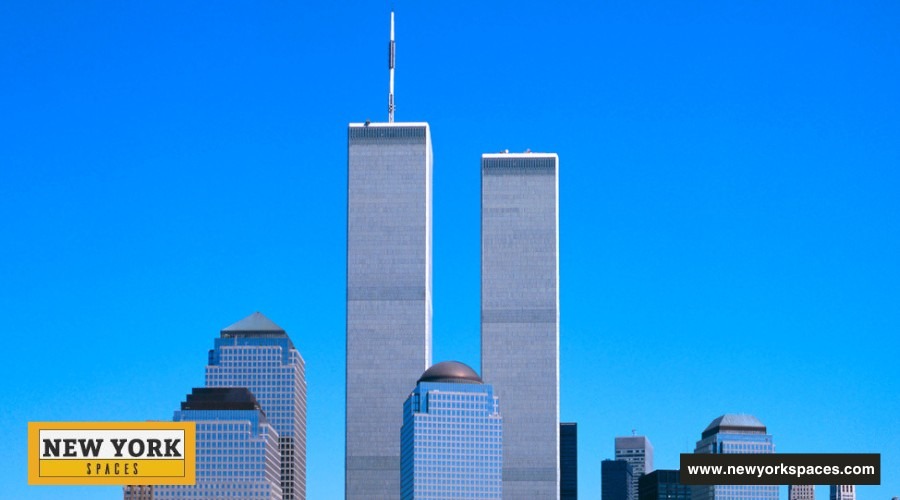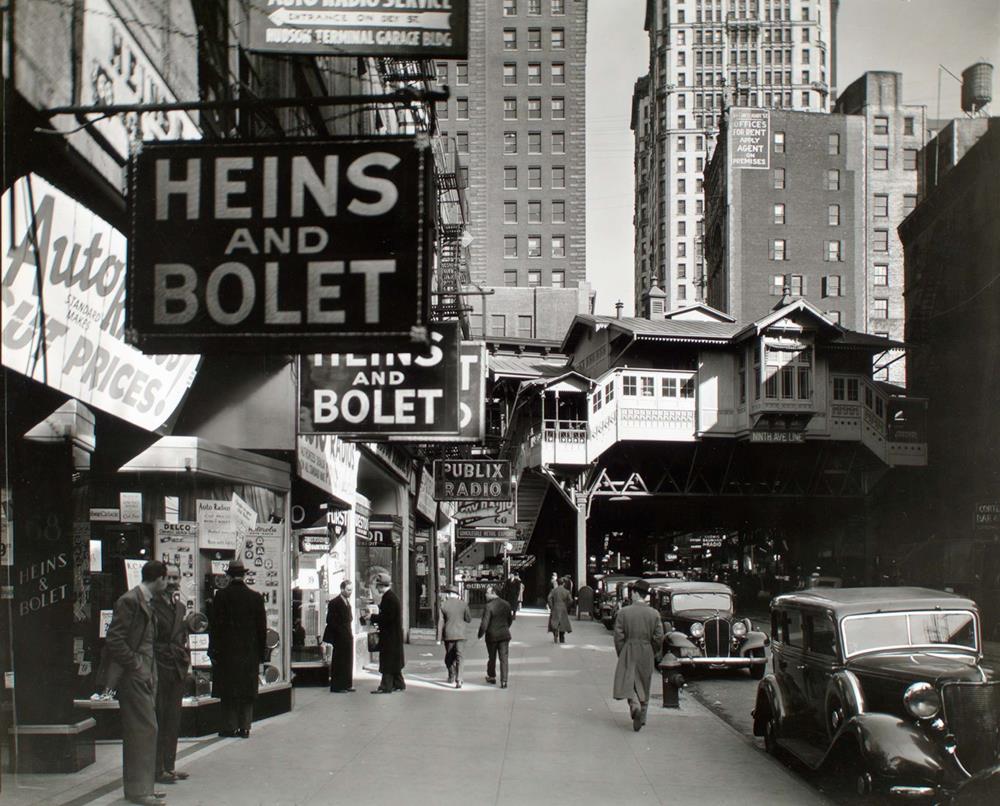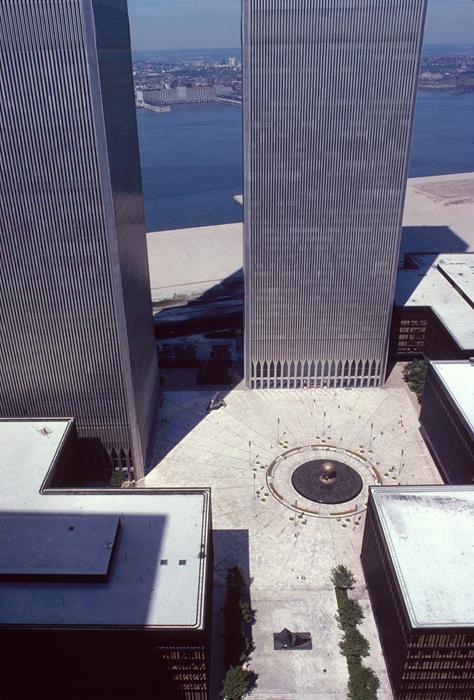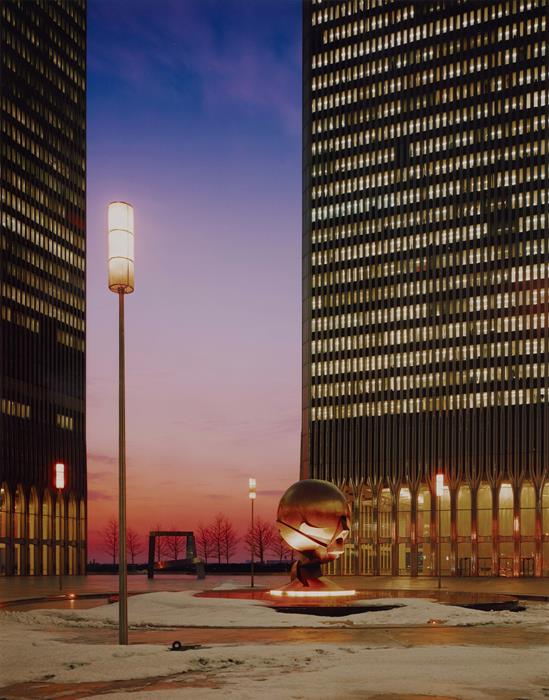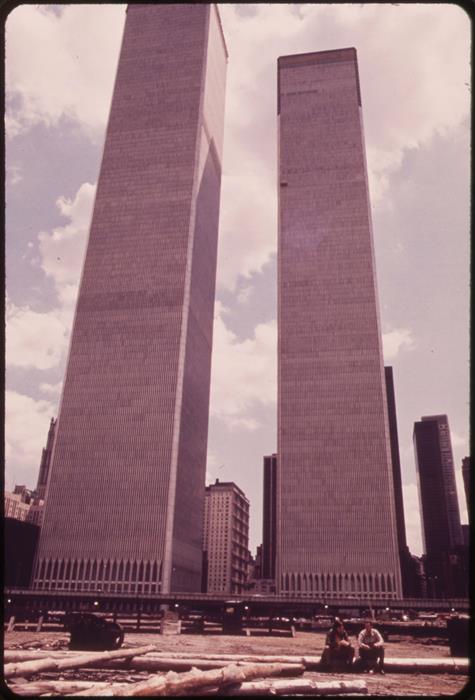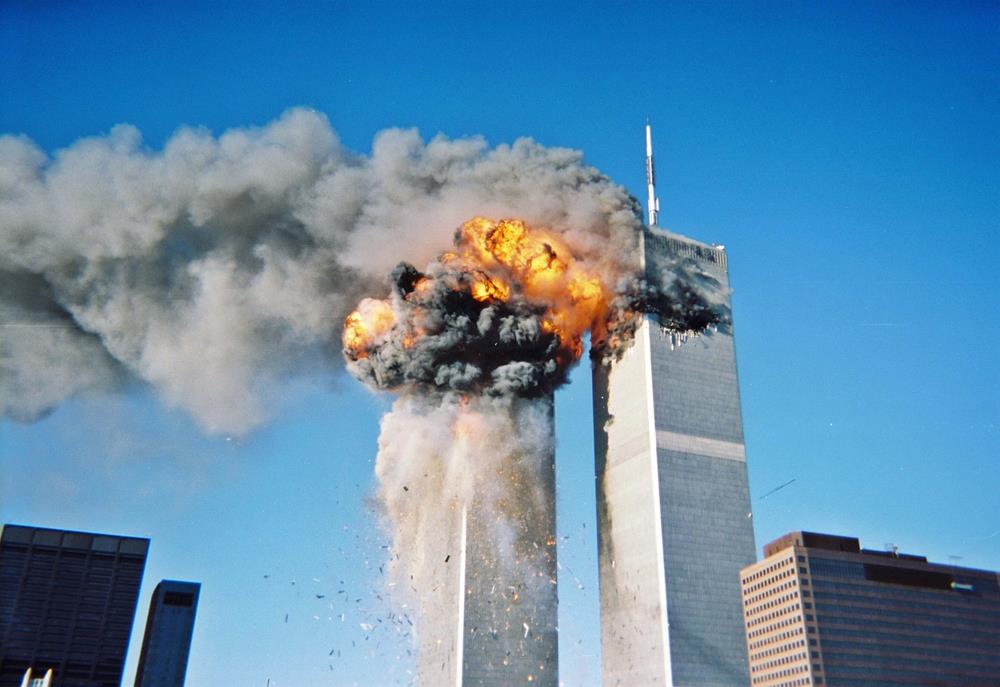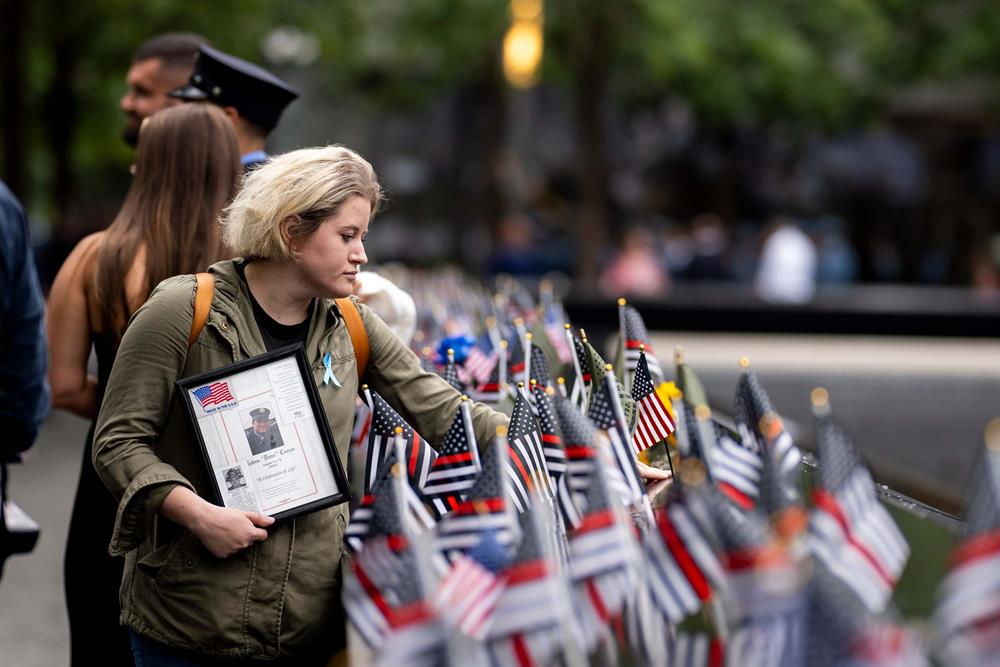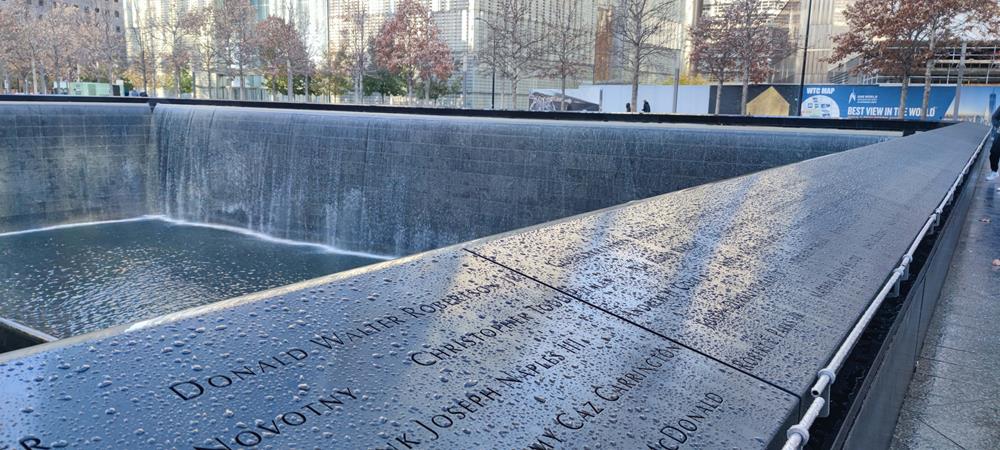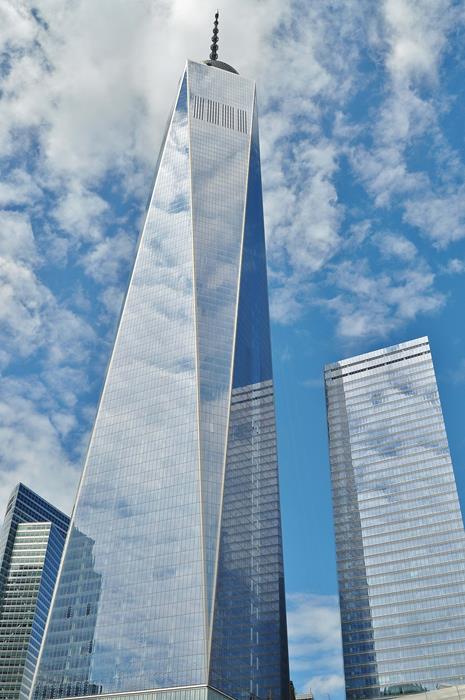After the horrific events of September 2001, the Twin Towers of the World Trade Center were no more. The world watched in shock as the towers collapsed in plumes of dark smoke, and the Manhattan skyline was changed forever. Before this event, the Twin Towers were icons of New York City and one of the key elements of Manhattan.
Today, we all know about the attack on the towers and mourn the loss of these icons. In order to understand what was lost that day, it could be useful to delve into the history of the World Trade Center itself. At the time of the destruction, the World Trade Center Towers hosted around 500 businesses and had about 50,000 employees working inside it. They have an exciting history, so lets take a look at this now:
Before There was the World Trade Center
Before the establishment of the World Trade Center, the western portion of the site was part of the Hudson River, with the shoreline near Greenwich Street and Dey Street. In November 1613, Adriaen Block’s ship, Tyger, burned near this shoreline, leading to the first European settlement in Manhattan. The ship’s remains were discovered in 1916 under a landfill extended since 1797. A second 18th-century ship was found here in 2010.
The area later evolved into New York City’s Radio Row, existing from 1921 to 1966. It was a warehouse district in Tribeca and the Financial District, known for its electronics stores centered around Cortlandt Street. The area was filled with used radios, war surplus electronics, and parts.
The concept of a World Trade Center in New York City emerged in 1943, with the New York State Legislature authorizing then-Governor Thomas E. Dewey to develop plans for it. However, these plans were paused in 1949. In the 1950s, David Rockefeller proposed the World Trade Center in Lower Manhattan to stimulate urban renewal.
In 1961, the Port Authority had to choose between the east and west sides of Lower Manhattan for the center. Negotiations with New Jersey Governor Robert B. Meyner led to a stalemate. Still, the decline in ridership of New Jersey’s HM Railroad and the Port Authority’s offer to take over it shifted the project to the west side. New Jersey supported this move, and the HM was renamed PATH.
The displacement of Radio Row businesses led to a compensation of $3,000 each by the Port Authority. Properties were acquired starting in March 1965, with demolition beginning in March 1966. Approval from New York City Mayor John Lindsay and the City Council was necessary, leading to an agreement in August 1966 for the Port Authority to make annual payments to the city instead of taxes.
The Beginnings of the Original World Trade Center
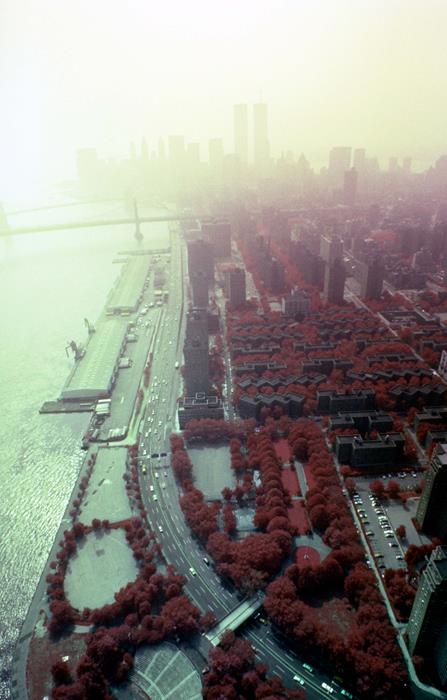
The story of the World Trade Center begins in the early 1960s, with a vision to revitalize lower Manhattan. Spearheaded by the Port Authority of New York and New Jersey and strongly championed by David Rockefeller, the idea was to create a financial hub that would bolster the city’s standing as a global economic powerhouse. The Port Authority selected Minoru Yamasaki as the lead architect and Emery Roth Sons as associate architects.
Yamasaki’s design was revolutionary. The plan featured two twin towers, each soaring over 1,300 feet, making them the tallest buildings in the world at the time. The design was a blend of minimalist aesthetics and futuristic technology, challenging traditional skyscraper construction. The Twin Towers were designed with lightweight, steel-framed exteriors and a unique ‘tube structure’ system. This system allowed for open floor plans free from interior columns, a groundbreaking feature that maximized office space.
The World Trade Center became one of the most striking American examples of the architectural style of Le Corbusier and was the expression of Yamasakis gothic modernist tendencies.
The property at the World Trade Center site was acquired in March 1965, and demolition work to clear 13 square blocks of buildings began the next year. The construction work of the World Trade Center commenced amid a flurry of excitement and skepticism. One of the most significant challenges was the foundation. The site was close to the Hudson River, necessitating the construction of a watertight perimeter wall, known as the ‘slurry wall,’ to prevent water from flooding the site. This slurry method, invented by the Port Authoritys chief engineer John M. Kyle, was unprecedented in its scale and complexity.
Creating the slurry wall was necessary before the excavation of material from the interior of the site could start. Construction started on the North Tower in August 1968 and on the South Tower in 1969. When completed in 1972, the 1 World Trade Center became the tallest building in the world for two years. The following year, the South Tower became the second-tallest building in the world. These two buildings stood at 1,368 feet and 1,362 feet, respectively.
As the Twin Towers rose, they faced both awe and criticism. Their sheer size and the vast “superblock” they occupied disrupted the existing street grid, a point of contention among urban planners and local residents. Additionally, the initial occupancy rates were lower than expected, casting doubts on the project’s economic viability.
Despite these challenges, the World Trade Center rapidly became an integral part of New Yorks identity. The complex included the Twin Towers, four smaller buildings, a hotel, and a shopping concourse. The observation decks on the 107th floor of the North Tower and the rooftop of the South Tower offered breathtaking views of the city, drawing visitors from around the world.
Beyond its physical structure, the World Trade Center played a vital role in telecommunications, housing a large array of broadcast antennas. It was also a cultural hub, hosting events and exhibitions, further cementing its status as a cornerstone of New York City life.
In retrospect, the original World Trade Center was a bold statement of architectural innovation, economic ambition, and cultural significance. This giant, in its towering presence, embodied the dreams and aspirations of a city that never sleeps.
The World Trade Center Complex
The World Trade Center (WTC) complex, a focal point of New York City’s Financial District, was a bustling site for commerce. Besides the iconic Twin Towers, the complex included several other buildings, each playing a vital role in the functionality and diversity of the WTC. Here are the buildings and sites located in the WTC complex:
1. The Twin Towers (1 WTC and 2 WTC): These towering structures were the most recognizable features of the complex. Standing at 1,368 feet and 1,362 feet tall, respectively, they were among the tallest buildings in the world at their completion. Each tower had 110 stories, encompassing 4.3 million square feet of office space each. The North Tower was marked by a distinctive 360-foot broadcasting antenna. They housed major financial companies, boasted sky lobbies for efficient elevator transportation, and featured a large observation deck. The Twin Towers made waves around the world when they became the target of the 9/11 attacks when two hijacked flights crashed into the buildings.
2.World Trade Center (Marriott World Trade Center): This building functioned as a hotel, providing accommodation and office space. Originally opened as the Vista International Hotel in 1981, it was the first hotel built in Lower Manhattan in over a century. The hotel experienced significant damage during the 1993 bombing and was ultimately destroyed in the 9/11 attacks.
3. 4 WTC, 5 WTC, and 6 WTC: These structures were lower-rise buildings compared to the Twin Towers. They primarily provided office space and housed various businesses, along with the operations of the Port Authority. These buildings also included retail spaces, contributing to the commercial dynamism of the complex.
4. 7 World Trade Center: Initially completed in 1987, this building was located just north of the main complex. It housed offices for various corporations and federal and city government agencies. 7 WTC was notable for its more modern design and its own tragic collapse on September 11, 2001, after being heavily damaged and catching fire.
Each building in the WTC complex contributed to its status as a global hub of commerce and innovation. The complex’s integrated design, featuring vast office spaces, a hotel, retail establishments, and an extensive underground parking garage, made it a self-contained city within a city. The site’s even has its own ZIP code: 10048.
The World Trade Center hosted over 430 companies from 28 different countries, symbolizing the interconnected nature of the modern world.
The complex’s construction on a landfill added to its engineering marvel, with foundations extending down to the bedrock, approximately 70 feet below street level.
Besides the buildings, these are the other prominent sites in the World Trade Center complex:
- Austin J. Tobin Plaza: Named after the former executive director of the Port Authority of New York and New Jersey, Austin J. Tobin Plaza was the five-acre plaza that connected the Twin Towers. It served as a bustling concourse for visitors and those who worked in the area, providing a respite from the narrow streets of the surrounding Wall Street area. The Plaza was known for its expansive space and various artworks.
- The Sphere: A prominent feature of the Austin J. Tobin Plaza was The Sphere, a 25-foot bronze sculpture by German sculptor Fritz Koenig. It stood in the plaza for three decades and became a symbol of peace and resilience. After the 9/11 attacks, The Sphere was recovered, relatively intact, from the rubble. It was first relocated to Battery Park and later moved to Liberty Park in 2017, serving as a memorial to the victims of the attacks.
- Top of the World Observation Deck: Located in the South Tower, the Top of the World Observation Deck was a major attraction, offering visitors spectacular views of the city. The indoor observatory was on the 107th floor, and there was also an outdoor viewing platform on the towers roof. From here, visitors could see up to 45 miles away on a clear day, providing a unique perspective of New York City and beyond.
- Windows on the World Restaurant: This was a prestigious restaurant located on the 107th floor of the North Tower. Known for its exquisite cuisine and breathtaking views, Windows on the World was a symbol of the luxury and opulence that the World Trade Center represented. The restaurant was a popular spot for special occasions and business meetings, offering diners a panoramic view of the city.
- Art and Cultural Exhibits: The World Trade Center was also a center for art and culture. The Port Authority initiated a Percent for Art program, which installed several unique artworks around the complex. Additionally, the Lower Manhattan Cultural Council sponsored residency programs for artists, providing them with studio space in the towers. These programs allowed artists to create work inspired by the unique perspectives offered by the high-rise environment.
The World Trade Center in Its Heyday
The World Trade Center, prior to the events of 9/11, was a significant feature in New York City’s landscape for both its architectural design and its role as an economic hub. The Twin Towers, soaring over a quarter mile into the sky, were not only a demonstration of architectural ingenuity but also represented the city’s financial strength. Each day, approximately 50,000 people worked in the complex, with an additional 140,000 passing through as visitors, highlighting the WTC’s importance as a commercial and cultural hub.
Its vast 16-acre complex included 13.4 million square feet of office space and housed more than 430 businesses from 28 different countries, making it a global center of trade and commerce. This high concentration of multinational corporations and businesses highlighted the complex’s role in the global economy.
Despite the initial criticism of its stark architectural style, the Twin Towers eventually gained iconic status, symbolizing not only New York City but also the ambition and resilience of its people. The complex’s size and prominence in the city’s skyline made it a recognizable symbol worldwide. It was featured in numerous movies and television shows, becoming emblematic of New York City as well as landmarks like the Empire State Building and the Statue of Liberty.
Before 9/11, the World Trade Center, with its sheer scale and global significance, was a testament to New York City’s role as a leader in world trade and finance.
A Day of Tragedy: The Events of September 11, 2001
On the morning of September 11, 2001, a day that started as clear and sunny, an unprecedented attack unfolded, forever changing the course of history and deeply impacting the World Trade Center, New York City, and the United States as a whole. The events began when American Airlines Flight 11 crashed into the North Tower at 8:46 am, followed by United Airlines Flight 175 striking the South Tower at 9:03 am. These attacks resulted in catastrophic damage to the buildings and a significant loss of life.
In the moments following the first crash, confusion and uncertainty prevailed. Initially, there was no immediate realization that America was under attack. However, the second crash into the South Tower dispelled any notions of an accident. The Federal Aviation Administration (FAA) quickly responded by banning all takeoffs heading to or through New York City’s airspace at 9:08 am and closing all New York City area bridges and tunnels at 9:21 am.
The Port Authority ordered the evacuation of both towers, an action that was underway by the time of the second crash. An estimated 10,000 to 14,000 people were in the process of evacuating at the time. This rapid response undoubtedly saved many lives.
Tragically, at 9:59 am, the South Tower collapsed, followed by the collapse of the North Tower at 10:28 am. These collapses not only destroyed the iconic structures but also led to a massive loss of life and caused significant damage to surrounding buildings.
The events of 9/11 prompted an immediate and large-scale emergency response from various agencies. Firefighters, police, and first responders rushed to the scene, showcasing remarkable bravery and selflessness in the face of unimaginable chaos. Their efforts were focused on rescue and recovery in the midst of dangerous and rapidly changing conditions.
In the immediate aftermath of the attacks, media reports suggested tens of thousands might have died, as over 50,000 people could have been inside the World Trade Center. However, the National Institutes of Standards and Technology estimated around 17,400 people were in the towers at the time of the attacks. Ultimately, there were 2,753 death certificates filed, excluding the hijackers, that were related to the attacks.
This day marked a somber moment in history, one characterized by immense loss and devastation but also by the resilience and unity shown in the face of tragedy. The impact on the World Trade Center and the city of New York was profound, leaving a lasting imprint on the nation’s consciousness.
Global Impact and Immediate Response to 9/11
The global reaction to the 9/11 attacks was one of overwhelming shock, horror, and solidarity. Across the world, countries and their citizens expressed their sympathy and support for the United States in various meaningful ways. This global outpouring of support reflected the widespread sentiment that the attacks were not only an assault on the U.S. but an affront to peaceful nations everywhere.
Global Reactions and Solidarity
Nations around the globe responded swiftly and emphatically. In Bulgaria, people gathered in town squares to light candles and pray, and the government declared a national day of mourning. Belarus and Burma (Myanmar) sent messages of support and commitment to counter-terrorism efforts. Canada played a crucial role by initiating Operation Yellow Ribbon, allowing commercial flights entering the U.S. to land at Canadian airports, and declaring a national day of mourning.
Chile and China were among many nations offering condolences and support in combating terrorism. France’s Le Monde newspaper famously ran the headline, “Nous sommes tous Américains” (“We are all Americans”), and the country declared a day of national mourning. Germany, led by Chancellor Gerhard Schröder, described the attacks as “a declaration of war against the entire civilized world,” while in the UK, “The Star-Spangled Banner” was played during the Changing of the Guard at Buckingham Palace.
This shared grief was not limited to the Western world. In Tehran, Iran, a stadium full of people observed a moment of silence, and in the Middle East, leaders like Israeli President Ariel Sharon and Palestinian leader Yasser Arafat condemned the attacks, with Arafat donating blood for the victims. Even in countries with strained relationships with the U.S., such as Cuba, there were offers of medical supplies and other forms of assistance.
Immediate Response in the U.S. and Military Action
In the U.S., New York Governor George Pataki activated the states Emergency Operations Center and established the Lower Manhattan Development Corporation and a World Trade Center Relief Fund. President George W. Bush gained a broad mandate to act in defense of the nation, marking the beginning of a global “War on Terror.” This included the authorization of CIA operations in Afghanistan against al-Qaeda and the Taliban. Subsequently, U.S. military operations began in Afghanistan on October 7, 2001, as part of Operation Enduring Freedom. These operations laid the groundwork for a long-term military presence in the region.
Legal and Security Changes
The attacks led to significant legal and security changes worldwide. The U.S. introduced the Patriot Act, enhancing domestic surveillance and tightening immigration laws. There was a shift in global intelligence and surveillance tactics, with a newfound emphasis on countering non-state terrorist groups. This shift was marked by the increased use of drones for surveillance and military operations and the advent of mass data collection and analytics, raising concerns over privacy and civil liberties. These changes, while controversial, reflected a new global security landscape defined by the threat of international terrorism.
Rebirth and Remembrance: The 9/11 Memorial and New World Trade Center
The 9/11 Memorial and the new World Trade Center embody the themes of remembrance, resilience, and renewal in the aftermath of September 11, 2001.
The 9/11 Memorial
The National September 11 Memorial Museum, established as a non-profit organization, spearheaded the effort to create a space of remembrance and honor. The memorial, titled “Reflecting Absence,” was the outcome of an international design competition managed by the Lower Manhattan Development Corporation. Launched in April 2003, the competition received over 5,000 submissions from 63 countries. The winning design, selected in January 2004, was crafted by architect Michael Arad and landscape architect Peter Walker.
Their concept integrates twin waterfall pools set within the footprints of the original Twin Towers. These pools are surrounded by bronze parapets that bear the names of the nearly 3,000 victims of both the 9/11 attacks and the 1993 World Trade Center bombing. The design is purposeful in its simplicity and symbolism: the waterfalls represent absence, and the cascading water creates a sense of tranquility, separated from the city’s hustle. The Memorial Plaza, opened on September 11, 2011, encompasses 400 swamp white oak trees, providing a living landscape of remembrance. Notably, the plaza includes the Survivor Tree, a Callery pear tree that endured the attacks, symbolizing resilience and rebirth.
The New World Trade Center
The reconstruction of the World Trade Center site was driven by a commitment to resilience and renewal. The centerpiece, One World Trade Center, stands as the Western Hemisphere’s tallest building. Designed by architect David Childs, the building reaches 1,776 feet, a number symbolically chosen to represent the year of American independence. It’s a statement of defiance against terrorism and a beacon of renewed strength and resilience. Construction was completed in May 2013 and was opened in November 2014.
Surrounding the tower, the World Trade Center site includes several other new skyscrapers, a transportation hub designed by architect Santiago Calatrava, and a performing arts center.
The site’s redevelopment encapsulates a collective determination to move forward while respectfully acknowledging the past. It stands as a testament to New York City’s unbreakable spirit and serves as a space where individuals from around the world can come to reflect, remember, and look ahead.
Conclusion
The history of the World Trade Center, from its ambitious inception to the tragic events of 9/11 and the subsequent period of remembrance and rebuilding, tells a story that is deeply entwined with the identity of New York City and the United States as a whole. Originally conceptualized as a symbol of economic strength and architectural prowess, the original World Trade Center grew to become a defining feature of the New York City skyline.
The devastating attacks of September 11, 2001, changed not only the physical landscape of the city but also left an indelible mark on the global consciousness, symbolizing a moment of shared grief and resilience in the face of unimaginable tragedy.
The National September 11 Memorial Museum serves as a poignant tribute to the lives lost, a space for reflection and remembrance. Simultaneously, the new World Trade Center complex stands as a powerful symbol of resilience and renewal, but suffice it to say – it cannot replace the original Twin Towers just yet.
Its history captures a story of innovation and resilience that continues to inspire and hold significant meaning not only for New Yorkers but for people across the world. The World Trade Center remains a symbol of hope, a reminder of the past, and a beacon for the future.

